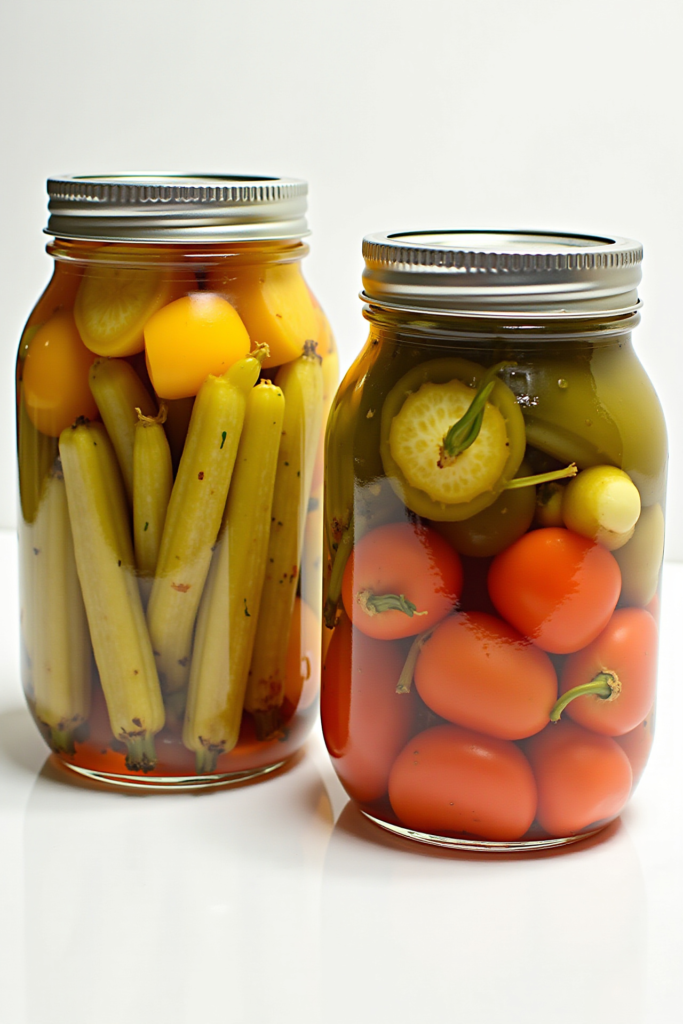Mixed Fermented Vegetables: Easy Recipe and Tips
Introduction
Fermenting mixed vegetables at home is a fantastic way to boost flavor, preserve your garden bounty, and introduce gut-friendly probiotics into your diet. This easy mixed fermented vegetables recipe combines crunchy favorites like carrots, bell peppers, and cauliflower for a tangy, crave-worthy result. With minimal prep and no fancy equipment required, you can achieve artisanal results that will amaze your friends and family.
Why Make Mixed Fermented Vegetables?
With their colorful medley of crisp textures and tangy, complex flavors, mixed fermented vegetables are a crowd-pleaser at any table. They add zip to sandwiches, bowls, and salads, offering vibrant nutrition and beneficial probiotics. Fermentation requires little effort, is naturally shelf-stable, and lets you leverage seasonal produce for maximum flavor and freshness. It’s the ultimate combination of simplicity and culinary creativity.
The Art of Easy Vegetable Fermentation
The key to delicious fermented veggies? A quality salt brine and fresh, sturdy produce. The salt creates the ideal environment for lactic acid bacteria to flourish, preserving the veggies and developing those signature sour notes. The process is simple: prepare veggies, submerge them in brine, and wait as time and microbes work their magic.
What Vegetables Are Best for Fermentation?
Firm vegetables ferment best—think carrots, cauliflower, radishes, green beans, and bell peppers. Feel free to mix and match according to taste or what’s in season. Add garlic and spices to customize the flavor. For best results, always use the freshest vegetables you can find, and make sure everything is cleaned before fermenting.
How to Ensure Successful Fermentation
Success is all about submerging veggies completely under the brine to prevent spoilage. Use a fermentation weight or a small clean jar to keep vegetables submerged. If scum forms on the surface, simply skim it off. Taste the veggies after five days—they’ll pick up more tang the longer they ferment.
Serving Suggestions for Mixed Fermented Vegetables
Fermented veggies are incredibly versatile: layer them into sandwiches and wraps, toss them into salads for crunch, or serve as a bright condiment on grain bowls, tacos, or with grilled meats. The acidity balances richer dishes and provides an instant flavor boost.
Nutritional Benefits and Serving Size
One cup of mixed fermented vegetables contains roughly 30–40 calories, is naturally low in fat, and is rich in fiber and gut-friendly probiotics. It’s a nutritious, refreshing addition to your regular meal rotation.
Mixed Fermented Vegetables (Recap)
Fermenting a mix of fresh, crunchy vegetables is an easy, delicious way to discover new flavors and add a healthy twist to your meals. Once you discover how simple it is, you’ll want to keep a jar on hand in your fridge year-round.
Ingredients
💡Meal Planning Tip: Save this recipe to instantly generate an organized shopping list with ingredients sorted by store section for efficient, stress-free grocery runs and meal prep.

Instructions
- Prepare your vegetables by washing and cutting into bite-sized pieces. Peel and smash garlic cloves.
- In a clean glass jar, layer the vegetables, garlic, peppercorns, mustard seeds, and bay leaves as desired.
- In a bowl, dissolve the salt thoroughly into the filtered water to create your brine.
- Pour the brine over the vegetables until completely submerged. Leave at least 1 inch of space at the top of the jar.
- Use a fermentation weight or a clean, smaller jar to keep vegetables submerged under the brine.
- Loosely cap the jar (don’t seal tightly—gases need to escape) and place it at room temperature out of direct sunlight.
- Check daily. Skim away any surface scum. After 5–7 days, taste the veggies. Once they are pleasantly tart and flavorful, tighten the lid and refrigerate.
Weekly Meal Planning
Fermented vegetables are the ultimate make-ahead addition to any meal plan. Save and schedule this recipe with CookifyAI to generate unified shopping lists, coordinate use with other recipes, and keep your fridge stocked with healthy, flavorful sides.
Planning Benefits:
- Auto-calculates total ingredient quantities across all planned recipes
- Sorts groceries by store section for fastest shopping
- Reduces duplicate purchases and forgotten essentials
- Simplifies weekly meal prep and boosts kitchen efficiency
Pro tip: When planning meals, schedule your recipes to see overlapping ingredients—perfect for using up fresh produce before it spoils and minimizing waste!
Cook and Prep Times
Prep Time: 20 minutes
Fermentation Time: 5–7 days
Total Time: About 1 week (mostly hands-off)
Enjoy the flavor and nutrition of easy homemade mixed fermented vegetables—ready to brighten any meal!



